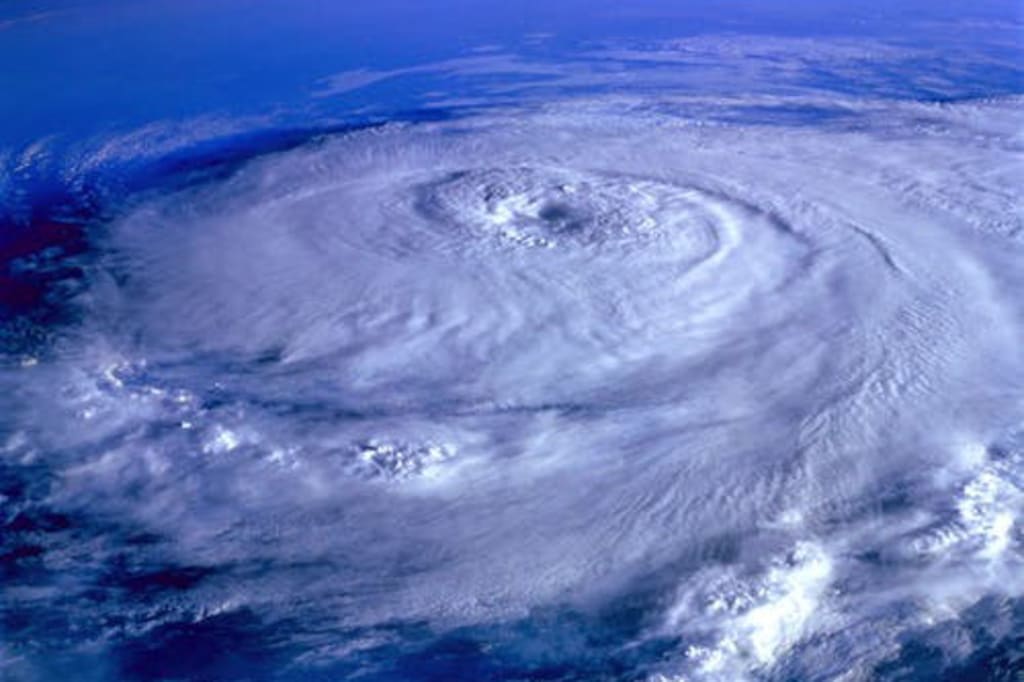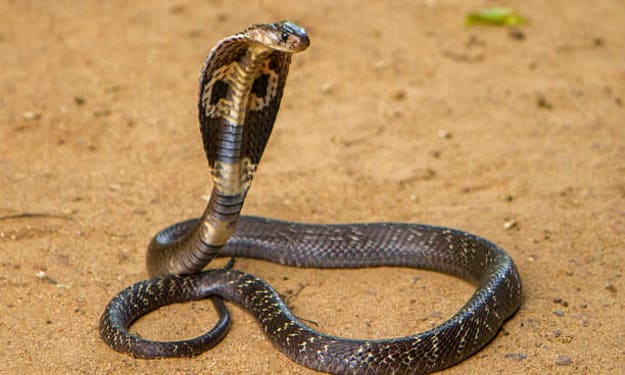Weathering the Storm
Hurricane Ida blows through

If you have been following the news at all, you're probably aware that Hurricane Ida swept through the Deep South and continued up the coast as a major tropical storm. She was even more powerful than Katrina, hitting on Katrina's 16th anniversary. As I write this, over 500,000 people in Mississippi and Louisiana are still without power from the storm. We were among the lucky ones. Even though we lost power, it was only for a couple of days. We had no structural damage and only a few trees came down. We were blessed.
To be 100% honest, I was unconcerned about this particular storm for my area. The winds were disorganized and I live far enough inland so that Ida would only be a tropical storm when it went over our heads. We would get a few inches of rain, winds of about 40 miles per hour, and we might lose power and a few trees. Naturally, the local news had every house disappearing into the clouds, potentially depositing us all in Oz. My neighbor, Dan, and I decided that we would not panic. Past experience told us that this storm wasn't going to have the 70 mph winds the newscasters were predicting.
Although we were not panicking, neither were we holding hurricane parties. We both had animals that needed securing. He had free range chickens that needed to go into pens in the kennel building and the kennel building itself needed prepping. We made certain all the dogs had clean bedding, a little extra food to eat in case the wind kept us from reaching the building, and we drew extra water in five-gallon buckets to give them drinking water if we lost power.
Back at the homestead, my quail cages needed securing. I gave the quail extra food and water, as well as some cucuzza vines to hide in if they felt inclined. After I closed the doors, I tied the doors in place with bungee cords. Then, I wrapped the cages in extra-large blue tarps, tied the cages to the garden fence, and placed concrete blocks on each roof. They were going nowhere, unless the tropical storm turned into a major hurricane in our location.

The goats were a bit easier. The bucks have open-sided shelters into which they can go to stay dry. They had a bit of hay and water to keep them fed and an early serving of grain. The does went into the afore-mentioned goat shed. Mimi knew that something was coming and led Raven right inside. Raven, to her credit, didn't give Mimi or I any backtalk. Sometimes I realize that goats are smarter than we give them credit for being. Then again, it might have been the silence that cued her in. If you've ever lived in the country, you know there's no such thing as "silence." On my homestead, there are always roosters crowing, dogs barking, goats bleating, birds singing, cicadas and tree frogs buzzing, and hawks or owls calling. I even hear the occasional yip of a fox or coyotes howling in the distance. However, at ten o'clock that morning, there were no sounds but the cars going up and down the road as people did their last-minute shopping.

Once the outside animals were settled in, I went inside and got myself and the dogs settled. I pre-made a couple of meals, drew about 10 gallons of water for drinking and cooking, put another 10 gallons in buckets on the porch for the cats and for flushing. The ex-pen came down and the crates stacked in its place. I live in a tiny house--literally--with about 300 sqft of living space. All the same, I have no desire to search for a five-pound dog in the dark when it's hidden itself under my couch or under a cabinet because a tree limb caved in the roof. By mid-afternoon, when the rain was coming down and the winds were beginning to pick up, the dogs were in their crates, comfortable with the blankets and bones and buckets of water.
I know that people think of their pets as "family," which is all well and good in the best of times. During a storm, however, it's up to us to protect our dogs, whether we feel that they like their circumstances or not. It is my belief that every dog, show dog or pet or working dog, needs to understand how to load into a crate and stay in there quietly for as long as it is expected to remain. Knowing how to be crated can quite literally save your dog's life: if you ever need to take your dogs with you to a shelter, that shelter is likely to expect your dog to remain crated while you are there. Think about it. Dogs who cannot remain quiet in a crate will be turned away from a shelter. Anyone who lives in areas where violent storms are the norm needs to teach their pets this skill. Every single one of the dogs I have at The Cottage have been crate trained since birth. Their mothers gave birth to them in crates, they were raised in ex-pens using crates as beds, as adults, they eat and sleep in their crates.

Widget was not a happy camper when his ex-pen came down, but he went into his crate-den without a fuss. It didn't take him long to get bored and to want to come out to play, but he quickly learned that being in the crate has advantages. After all, he's never gotten a yummy, yummy deer shoulder blade to chew on before. Once he had stared at it until he was certain it would not move, then barked it into submission for about five minutes, he convinced himself it was quite safe to eat it. He started by nibbling at a corner, then settled down for a bit of fun. After a few minutes Widget tossed his bone around a bit, as best he could in the confines, just to remind it that he was the one in charge--even if the bone was as long as his entire body.

The power went off at 8:24. I turned on one of my emergency light sources (a fully-charged obsolete cell phone) and got ready for bed. The wind wasn't horrendous, so I saw no need to be vigilant--and my being nervous would just add to the dogs' stress, as well. One thing you learn when showing dogs is that "nerves go right down the lead," meaning that if you're nervous when you go into the ring, the dog will be nervous, too. To my surprise, Widget was as relaxed and happy as he could be with his first tropical storm blowing around him. He snoozed for hours, cradling his head on his bone, when he was not eating it. He ignored the noises from the gusting wind, the creaking of the trees, the rain pelting our windows like birdshot. The only exception to his malaise came when a good-sized pine branch came down on the roof. He looked up from his bone pillow, blinked blearily a few times, and went right back to sleep. For Widget, Ida was a non-event.

About the Creator
Kimberly J Egan
Welcome to LoupGarou/Conri Terriers and Not 1040 Farm! I try to write about what I know best: my dogs and my homestead. I currently have dogs, cats, dairy goats, quail, and chickens--and in 2025--rabbits! Come take a look into my life!






Comments
There are no comments for this story
Be the first to respond and start the conversation.